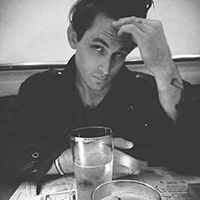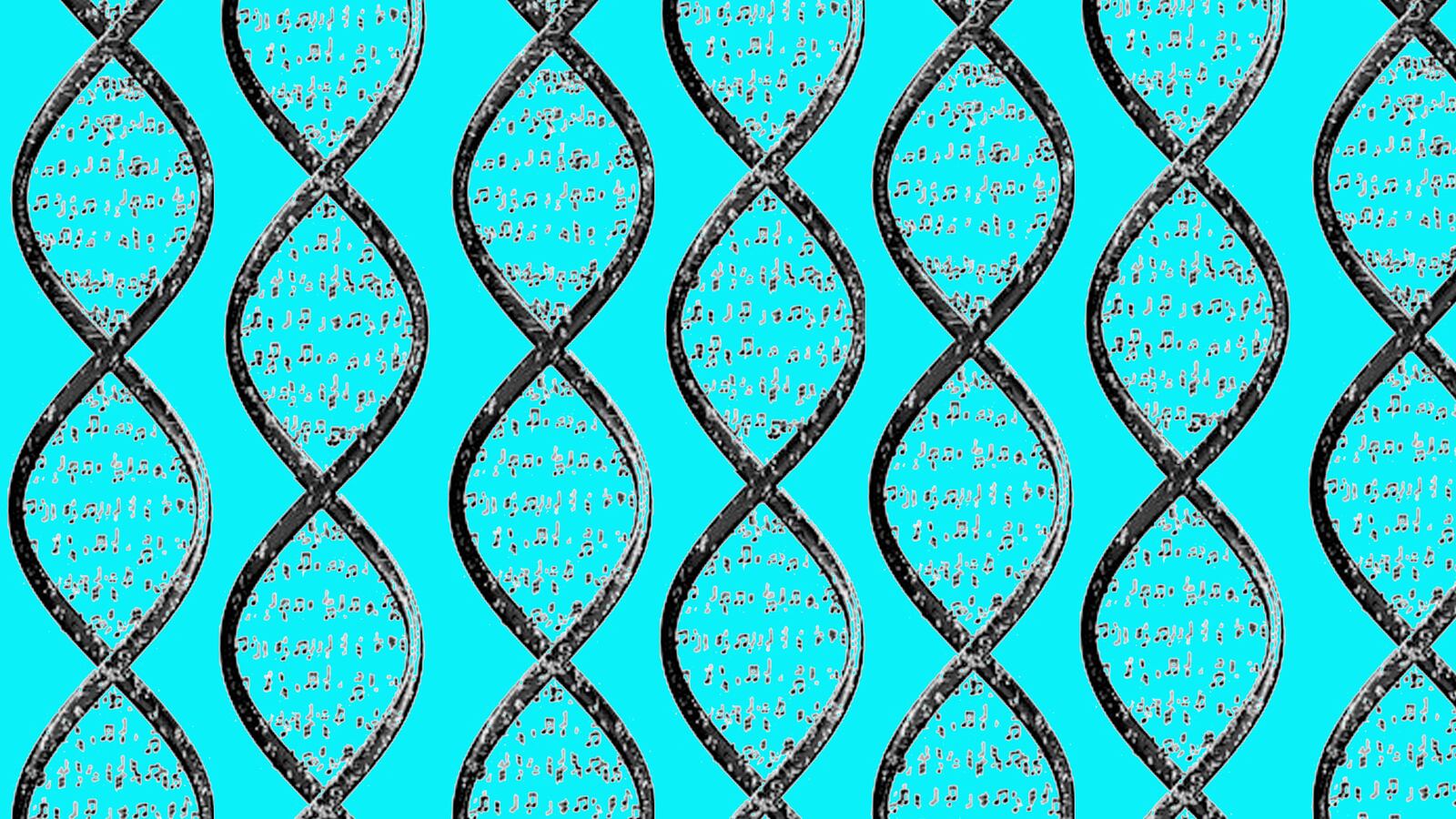On a recent Friday in London, an audience was bathed in music—and not in a metaphorical sense.
UK-based artist Charlotte Jarvis, in collaboration with the biochemist Dr. Nick Goldman, encoded a new musical composition by the Kreutzer Quartet into DNA. They then suspended that musical DNA into soap bubbles. At Dilston Grove, a London gallery, they used bubble machines to dispense the solution out over the “listeners.” Hence, the crowd took a bath, of a sort, in music—of a sort.
Jarvis spearheaded this complex, multifaceted work, which she titled “Music of the Spheres.” An artist who works frequently with biotechnology, she conceptualized the piece while in an actual bath.
This isn’t Jarvis’s first attempt to dabble with DNA—a few years ago, she tried to encode human language into the double helix but her efforts came up short. In layman’s terms, this process uses DNA as a storage device in the same manner we use hard drive storage for everyday computing, translating digital code into basic nucleic genetic matter.
It is the density of information that can be encoded onto DNA that makes it such an appealing prospect. Given that it is the data storage system of life on Earth, its confluence with computing demonstrates the ongoing transience between biological and digital worlds.
When Goldman, a researcher now stationed at the Molecular Biology Lab of the European Bioinformatics Institute, caught wind of Jarvis’s language project, he reached out to her with the knowhow to help accomplish her vision.
Goldman had the resources to embed more than just language into DNA. The double helix has been studied for a few years now as a data storage medium, as it is remarkably stable. The goal—in music storage standards—is the ability to store 1 million CDs in a gram of DNA for 10,000 years. Just this year, a paper was published that predicts under certain conditions, data can be retrieved from DNA storage systems, error-free, for 1 million years. Conventional methods of data storage are lucky to last 50 years.
“‘Raw’ DNA like this,” says Goldman, who recently published a paper titled “Towards practical, high-capacity, low-maintenance information storage in synthesized DNA,” “if it is kept cool (near or below freezing), dry and dark, it can last for tens of thousands or hundreds of thousands of years, with no further expenditure of energy. That’s one of the reasons it is a very good candidate for a data archive medium. Even in solution at room temperature and in daylight, DNA will be quite stable for days or weeks.”
But it’s not as if outside data can actually be stored in the genomes of living organisms (at least, not yet). Rather, this data storage system uses synthetic material. The synthesis does not leave a living organism, as DNA itself is not alive. Rather, the process encodes the digital ones and zeroes into the double helix, using the letters A, C, G, and T. Those four letters constitute the basic information system of DNA.
One could collect the bubbles from the art project and process them through a DNA sequencing machine, of which there are many across the globe. Indeed, there is a prototype minION as a part of Jarvis and Goldman’s exhibition, a consumer electronic device that can sequence DNA, and that can be plugged into your laptop. It is about the size of a packet of chewing gum. The sequencer outputs a computer file that gives the composition of each DNA fragment detected in the sample.
“The information in each DNA fragment could be decoded and used to rebuild the original MP3 file,” Goldman says. “At the end of that process, the complete reconstructed MP3 file would be ready for you to play on your smartphone or iPod.”
While DNA has yet to hit the music-media market, the music encoded in the soap-bubble strands was commissioned specifically for this project. And to add a level of complexity to it, Jarvis reached out to the Kreutzer Quartet: Peter Sheppard Skærved, Neil Heyde, Mihailo Trandafilovski, and Morgan Goff. Two of the members ventured with Goldman into the server room of the European Bioinformatics Institute, where huge amounts of data, mined by Goldman and his colleagues, is processed.
“It was one of the strangest working days of my life,” Goldman said. “to take quartet members into the server rooms at the EMBL-European Bioinformatics Institute so that they could hear the noise of genomics number-crunching computers, and see them tuning their instruments to match the tones of the hardware!”
“The work we did in the server room was improvisation responding to the extraordinary (and quite dangerous) noise levels,” Skærved told The Daily Beast, “and the atmosphere of the room and its environment. I particularly enjoyed the sense of frenetic technological activity—the humming, thrumming, high harmonics, enormous overtones, heat, together with the light effects—the looming server banks, with whirling, winking lights, wires coiling everywhere.”
This portion of the project was filmed, then played back to the audience in silence as the bubbles dispersed. (Two other movements were conceived and performed by the Quartet as part of this project, but not embedded in the DNA.) In a striking contrast, the strings used for the performance were antique instruments, according to Skærved—violins from the early 17th century, a viola from the 18th, a cello from the early 19th century.
“Art and Science were never considered as separate entities in the past,” Skærved said. “Einstein was inspired by Bach, Milton by Galileo, Coleridge by Humphrey Davy. This project unashamedly says these things are not separate, the imagination does not recognize such a separation. I want to be part of that.”
“While Charlotte’s bubbles may be transient,” Goldman said, “the DNA and the information it contains will last long enough to be transferred onto the surface where the bubble bursts—maybe your skin?—and from there, in principle it could be collected, sequenced [the technical term for reading strands of DNA], and the information could be reconstructed.”
“But for now,” Skærved said, “like the Bach and Robert Johnson sent out with Voyager 1 in the early ’70s, it is drifting around in the bubbles at Dilston Grove, and on the clothes of the people who come to the exhibition and the opening.”






